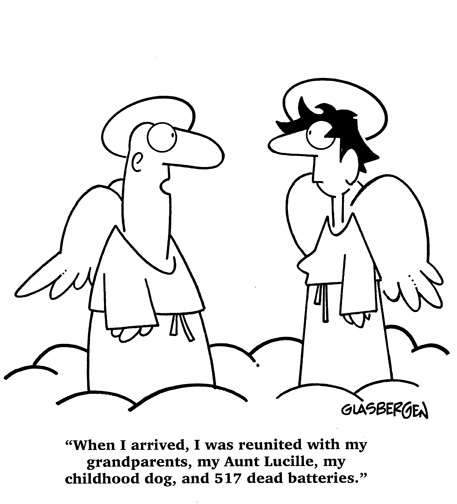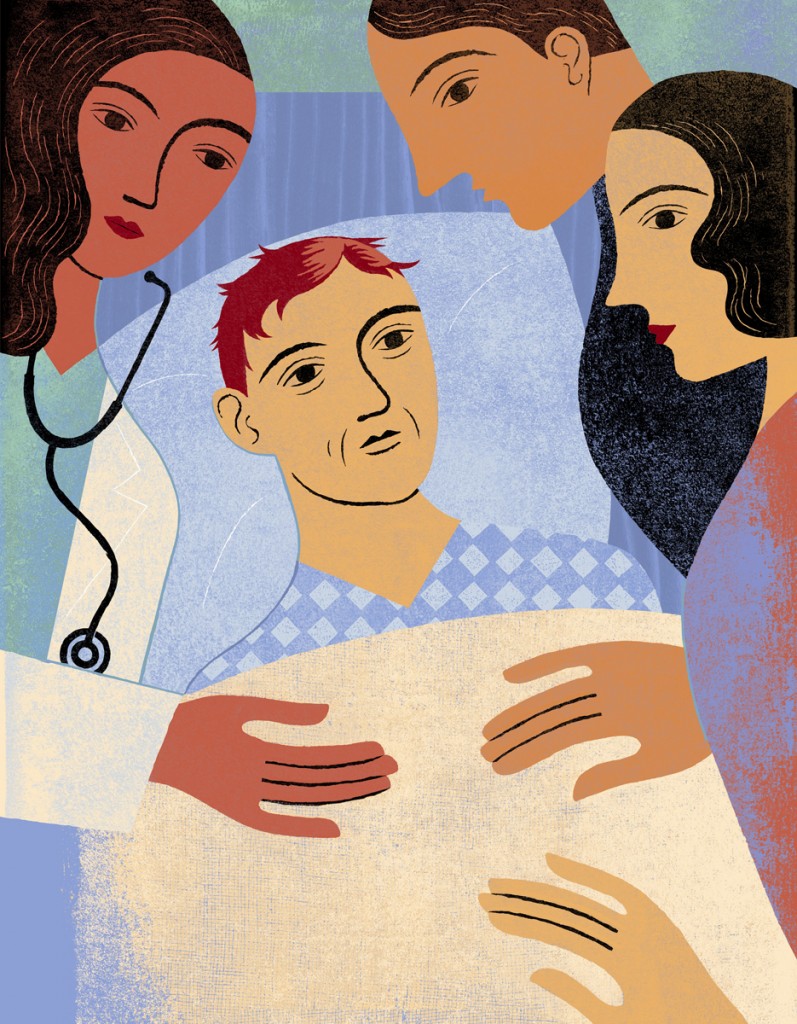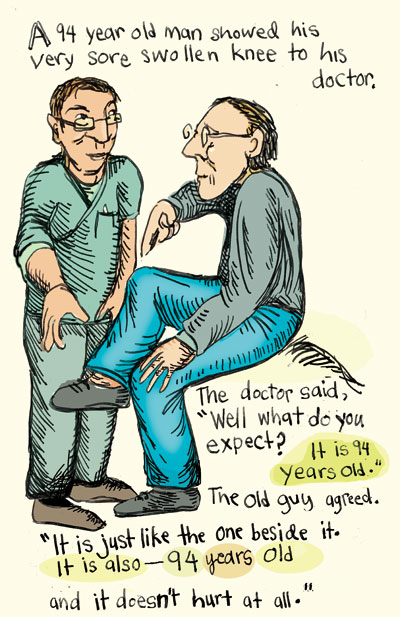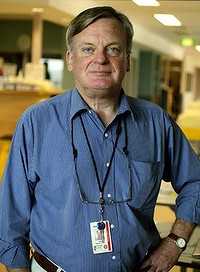by MONICA WILLIAMS-MURPHY, MD
Those who know and work with me have heard me state without hesitation that it’s morally wrong to do CPR on 90-year old great grandmas. So, it was with great relief that I read the “Do Not Offer CPR” option in a recent JAMA article urging a revision of our present approach to the use of CPR for those who are unarguably at the end of life.
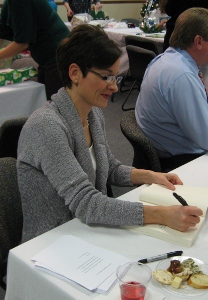 This is a change from the present expectation of CPR no matter what, to a set of recommendations that incorporates the question of whether CPR “harms or helps” individuals. Finally, some sanity.
This is a change from the present expectation of CPR no matter what, to a set of recommendations that incorporates the question of whether CPR “harms or helps” individuals. Finally, some sanity.
Medicine attempts to balance patient autonomy with the grand directive: “First, do no harm.” Recently, I have also discovered that as a doctor, it is also my job “to do no harm” to the families and surrogate decision makers of those in my care.
Last week, I learned that even asking families to make CPR or DNR decisions in the face of almost certain death creates unnecessary harm for them as well. In the following case, I created a decision-burden for a family that they neither wanted, needed, nor could handle—a decision-burden that would not change the outcome (death), yet would likely trouble them for the rest of their lives.
This case drove home to me another compelling reason why CPR should not be offered to those who are imminently dying: not only does the act of CPR harm the dying patient, the actual act of asking the families to make futile CPR vs DNR decisions harms them as well.
Mr. Gray was an 80-year old great-grandfather of 12. For years he had taken a blood thinner for his heart condition, without any complications, until 3 days before I saw him.
3 days prior, he had fallen and hit his head, developing a large bruise across his forehead. Despite his family’s urging, he had not gone to a doctor to get it checked out. Instead, he went about his daily activities, bothered only by a mild headache. This headache suddenly became severe on the 3rd day and he began to vomit. Immediately after vomiting, he became confused.
No more messing around, the family called 911. Mr. Gray was now too confused to argue or refuse a medical evaluation.
EMS loaded him up easily enough though, and told the family to follow them for what would be a short ride to the hospital. The ride was short enough, but something terrible happened during the transport-Mr. Gray fell unconscious and stopped breathing.
What ensued on arrival to my ER was high-end aggressive emergency care: he was intubated, placed on a ventilator, we placed multiple IVs, gave mannitol, ordered emergency plasma and ran with Mr. Gray to the Cat Scanner, all within minutes.
I tapped my foot impatiently awaiting the images of his brain to load up on the computer.
“Darn it,” I muttered when I saw the pictures confirming what I had already clinically diagnosed and begun treating. A large hematoma had developed on his brain. According to the radiologist there were already signs that his brain was herniating.
Just then, I got a call from the lab. Mr. Gray’s blood thinner levels were toxic. It would take hours to correct this before Mr. Gray could even go to surgery, and what Mr. Gray did not have was hours to wait. What he did have was a large, loving and very concerned family whom I had yet to talk to in detail.
I spoke with the neurosurgeon before I gathered this family. The specialists said that due to the blood thinner toxicity, the delay would most likely make the injury unsurvivable — meaning, we expected him to die.
I let out a long sigh and said, “Yeah, that’s what I thought.”
Hanging up the phone, I braced myself to talk to the family.
When I walked into the family waiting area it seemed to be standing room only. I asked those who could to take a seat. Sitting or standing, everyone leaned forward, anxiously, with expressions mixing dread with hope.
No matter how many times one has done this, these conversations are never easy. First, I gave the general explanation of what had occurred and how bad things looked for Mr. Gray. I explained that surgery to remove the hematoma could not be performed until the blood thinner problem was corrected and that this wait would most likely prove to be “too long” for him.
Tears began to flow. Children grabbed the hands of parents and siblings looked at each other in shock.
Next, I outlined all of the “doctor-driven” decisions that would be made and explained possible outcomes. If A happens then we can do B, but if C happens then B is not an option.
Then, finally, I laid the most serious decisions on them. How would Mr. Gray die, when his time comes? Would they allow natural death by withholding CPR? Would they request an attempt at CPR? Finally, would they consider withdrawing artificial life support measures.
Already grief-stricken, I watched their eyes glaze over in fear and pain as I gave them these final options and explained that eventually we would need to have a family decision on these choices (in the absence of a pre-selected decision maker to speak for Mr. Gray).
Looking around the room at heads hung low, there was deep silence. I stared at my feet, not looking at them in an attempt to give them space for thought.
But in that quiet moment, something shifted within me. I began to feel ashamed that I had even asked such questions at all. In that moment, I began to understand that the burden I had given them was too great and complex. I was asking them to participate in choosing his death, a task that they clearly did not want- something they obviously had never discussed. And, saddest of all, after pressuring them for an answer, this answer was not going to change the outcome for Mr. Gray-he was still probably going to die and all that they would have gained from this situation is a persistent guilt burden about whether they made the right choice or not.
Suddenly, it became so clear to me that this should not even be their burden at all. In that moment, I grew to understand that it was wrong to even ask families to make such decisions in futile circumstances – that should be my job. I should be the one who guides them through this time by saying, “CPR will not bring him back to who he was, it will not help him, it would only cause us to do further damage to his dying body. Because of this, we will not perform CPR on Mr. Gray when his heart stops, but we will care for him in every other way. We will make sure that he is comfortable and that you are with him. Now is your time to say, ‘Thank you, I love you, and good-bye.’”
I lifted my head. Looking around the room, I saw the strain on everyone’s faces and knew more than ever before that the way we practice end-of-life medicine must change.
Mr. Gray and his family, taught me first hand that it is cruel to burden families with CPR decisions in the face of futility. This type of decision-making should be built into medicine. It should be part of an end-of-life algorithm that is created and supported by the entire medical establishment for 3 reasons in addition to those cited in the JAMA article:
The maxim of “first, do no harm” should be extended to not just the patient, but also to the families of the dying patient in our care. We should not harm their emotional lives and consciences by asking them to make decisions about CPR that are ultimately futile. Such a burden is pointless and creates unnecessary suffering.
The Patient Self Determination Act of 1990 states that a patient or patient representative has the right to refuse or accept any medical procedures offered to them. This is the legislative back bone of modern concepts of patient autonomy. Presently, CPR is the default option and is therefore automatically offered by the medical system. But, as we learned from Mr. Gray and his family, there are times when this is inappropriate. I support the position of the JAMA article: “Physicians should not offer CPR to the patient who will die imminently or has no chance of surviving CPR to the point of leaving the hospital.” (Like Mr. Gray, whom we expected to die within 24 hours). Instead, we should spend our energies focusing the patient and families on creating comfort, peace, and closure with their remaining time together.
If the entire medical establishment agrees to create and adhere to guidelines outlining the exclusion criteria for CPR, like exclusion criteria for thrombolytics in stroke, then it cannot be argued that not offering CPR is a violation of patient autonomy. A patient or family cannot demand a procedure that is not offered when it is considered medically contraindicated.
In the end, it is we doctors who need to shoulder the burden of CPR decision making in futile situations. It is the burden for which we were trained, the years of experience caring for the dying, the hours of studying statistics and outcomes. We cannot in good conscience guide all other life-sustaining medical decisions then suddenly shift all death-determining medical decisions back to the family … it is a burden they are not equipped to bear and one they may never shed.
Complete Article HERE!


